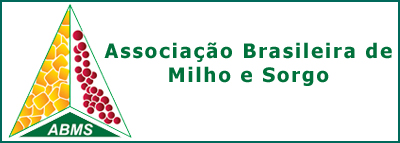USE OF UNICONAZOLE IN GROWTH REGULATION AND BIOCHEMICAL CHANGES IN MAIZE
DOI:
https://doi.org/10.18512/rbms2022v21e1246Abstract
The current paper evaluated the incubation time, and doses of Uniconazole (UCZ) applied to maize seeds to verify the plants’ response at different phenological stages. MSG1001 hybrid seeds were treated with UCZ (0, 50, and 100 mg.kg-1 of seed) with different incubation times (IT – 1 min and 12 h). In the lab experiment, the treated seeds were displaced in rolls of the previously moistened Germitest paper and incubated for a week in a BOD chamber at 25ºC with a 12-hour photoperiod. In the greenhouse experiments, sowing was carried out in pots with sand, and supplementary irrigation was applied for ten days. In the field experiment, sowing was performed with 0.5 m spacing between rows in densities of 75,000 and 65,000 plants.ha-1. In the BOD and the greenhouse, the design of both experiments was entirely randomized in a double-factor scheme (IT x UCZ). A randomized block design in a triple-factor scheme (IT x UCZ x Population) was used in the field experiment. Seed treatment with UCZ did not promote germination inhibition. The concentration of 100 mg UCZ kg-1 of seed in the 12-hour IT resulted in a more significant accumulation of root mass in seedlings after one week in the BOD. In the greenhouse, plants in the V1 stage presented longer shoot lengths for the treatments that received UCZ. Incubation time influenced root length, and IT = 12 h at a concentration of 50 mg UCZ kg-1 of seed was more efficient than IT = 1 min. Application of 100 mg UCZ kg-1 of seed was more effective for accumulating chlorophylls A and B in IT = 1 min. In the field, seeds treated with UCZ changed plants for female flowering and the number of green leaves below the ear. The population of 75,000 plants.ha-1 was more productive, with UCZ contributing to the hybrid’s yield. Incubation of the seeds with 50 or 100 mg UCZ kg-1 of seed in IT = 1 min contributed to more productivity than IT = 12 h. The grains’ starch content increased with the application of UCZ at a dose of 100 mg kg-1 of seed, and the starch percentage was modified according to population density and incubation time.Downloads
Published
How to Cite
Issue
Section
License
Authors retain copyright and grant the journal right of first publication with the work simultaneously licensed under the Creative Commons Attribution License that allows the sharing of work and recognition of the work of authorship and initial publication in this journal.
Authors are able to take on additional contracts separately for non-exclusive distribution of the version of the paper published in this journal (eg, in an institutional repository or publish as a book), with acknowledgment of its initial publication in this journal.
Authors are permitted and encouraged to post their work online (eg, in institutional repositories or on their website) at any point before or during the editorial process, as this may leadto productive exchanges, as well as increase the impact and citation of published work.



